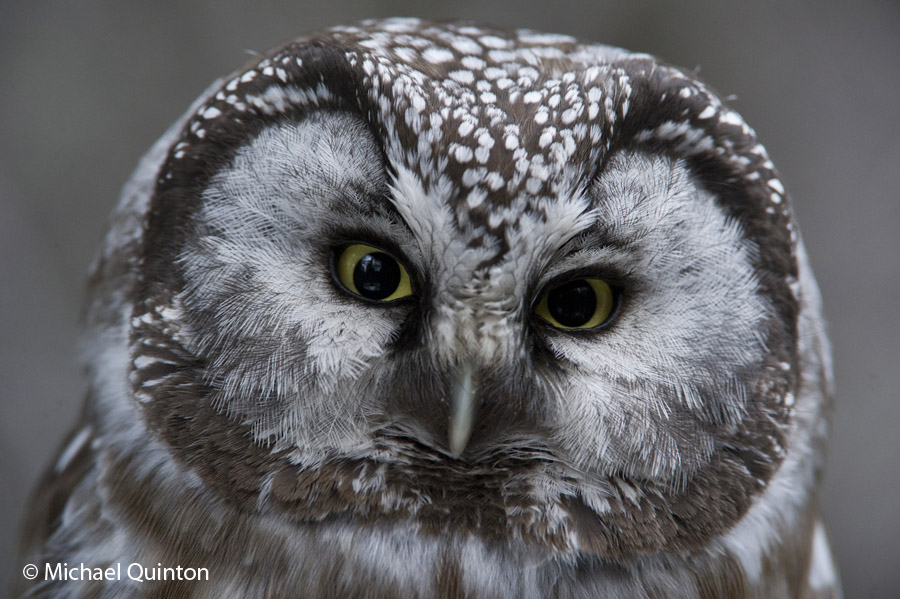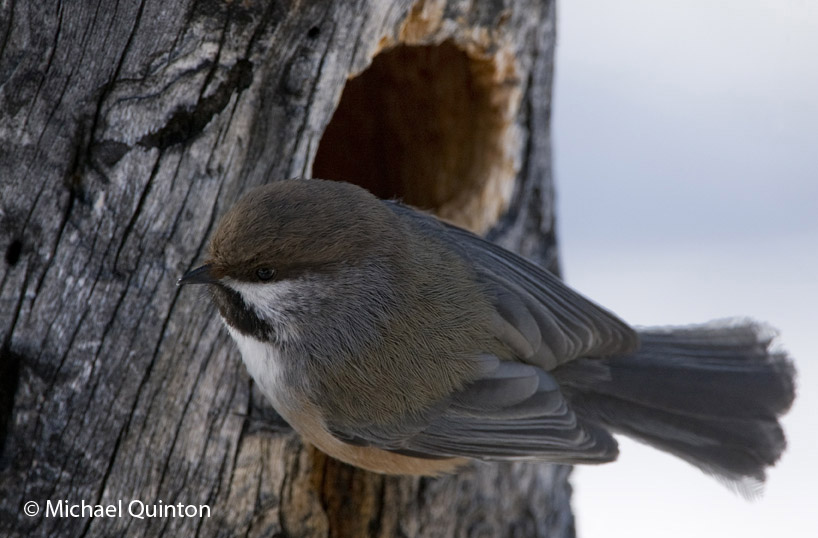 For more than two months this male northern flicker and his mate maintain a territory centered around their nesting cavity in an Alaskan black spruce forest. Flickers are the most common woodpecker in Alaska’s interior. Continue reading
For more than two months this male northern flicker and his mate maintain a territory centered around their nesting cavity in an Alaskan black spruce forest. Flickers are the most common woodpecker in Alaska’s interior. Continue reading
Tag Archives: photography
BOARS, THE MOST DANGEROUS GRIZZLIES?
What happens in a close encounter with a grizzly bear is dependent on a lot of factors. What you do is important but the most important factor might boil down to which of the local bears you have just run into. Not all grizzly bears are the same. In fact they are all individuals, with different habits and temperaments. Sub-adults, lacking experience and confidence, often travel with a sibling for extra security and status. Females with cubs don’t like close surprises. Sows with cubs attack people more often than other classes of bears. These defensive attacks can be very serious but rarely end in death. Continue reading
BOREAL OWL – PART 3
Yesterday I climbed a ladder twenty feet up to a natural hole in a decaying poplar within the boreal owl territory. I had found the male inside the cavity once, so I had always thought it was a likely place for a nest. I took a quick look inside the cavity with flashlight and mirror but there was nothing inside. A single gray, downy feather clung to the bark on the outside. The owl must have been spending some time there, I thought. When I looked around I was surprised to see the little boreal owl glaring at me from about ten feet away. It was clearly agitated that I was at the hole. A few minutes later as I photographed the owl from the ground, I suddenly heard the rapid calling of the male. But it wasn’t the owl I was photographing. There are two boreal owls here!
This morning just after six a. m. I returned to the owl territory. As I neared the poplar the cavity seemed to have vanished. Through binoculars I could see the female was at the cavity entrance peering out at me. What perfect camoflauge. It has been fifty one days since I first located the little male boreal owl. Well, it seems that all his persistant singing has finally paid off.
NORTHERN FLICKERS PART 2
 Male northern flicker on spruce snag.
Male northern flicker on spruce snag.
By the end of May one pair of flickers I had under observation had settled into a routine. After their first egg was laid in the cavity the male no longer called from the nesting snag. Now the calling and most of the drumming was taking place at another dead snag about a hundred yards to the north. Continue reading
NORTHERN FLICKERS
Male northern flickers call to establish a breeding territory and attract a female.
This week was spent working on northern flickers which have shown up on our homestead. I have worked these beautiful woodpeckers extensively in the past yet there are still great shots to be had. I concentrated on getting the best shots I could of the opportunities that presented themselves. The leading off photo of the calling male was one shot I needed to improve on. This kind of shot presents a challenge because normally the eyes will be in focus but the long bill is not. I shot this at F16 to give enough depth of field. Continue reading
THE BOREAL OWL-PART 2
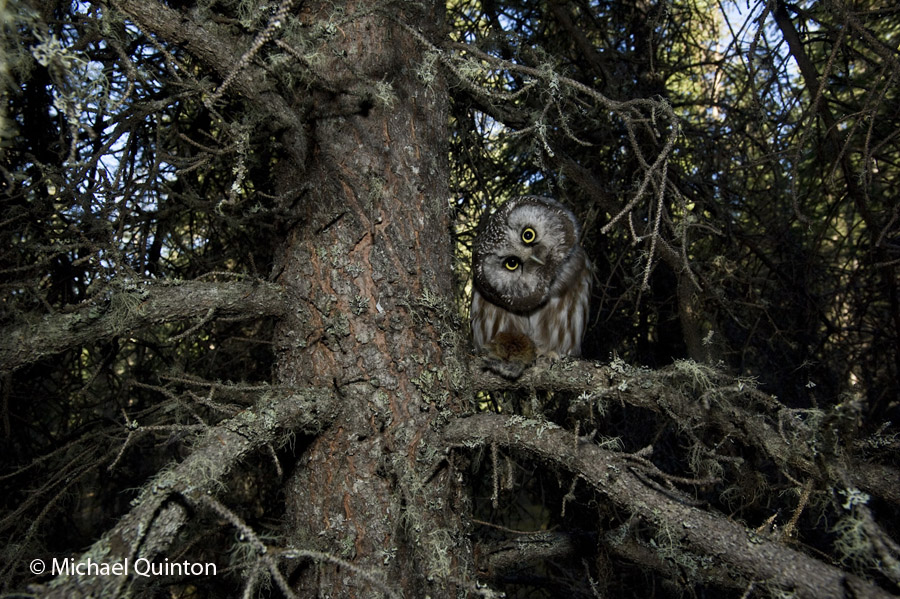 Boreal owl with red-backed vole.
Boreal owl with red-backed vole.
I have been continuing to keep track of the little boreal owl in Slana. Its calling is falling off. I no longer hear it in the daylight hours though my friend still reports hearing it during trips to the outhouse late at night. Less calling means it is much harder to locate but I am still finding it in the thick dark woods by searching an area of about one hundred yards by two hundred yards. This small area seems to be its preferred daytime roosting area. Slowly walk back and forth through the spruce and poplar forest and scanning every tree I find it about 30 percent of the time. Once I was guided to its location by the calling of a couple upset boreal chickadees. It is never in the same perch. Continue reading
BOREAL OWL
I got a tip a couple years ago about a lady who had complained about being kept awake at night because the snipes were making too much racket. But it had been too early in the season and I had a sneaky feeling it wasn’t snipes that were keeping her awake.
So, when I paid them a visit a couple weeks ago, I pulled out my I pod and speaker and asked if this is what she had heard. “Oh yes”, that’s it she insisted. “I could never forget that call. And they’re back! I have been hearing them again almost every night. ”
This was exciting news to me, because the call I had played was not the display flight of the common snipe. Instead I had played the territorial call of the boreal owl. She was quite surprised that it was a small owl she had been hearing. Continue reading
EDITING YOUR PHOTOGRAPHY
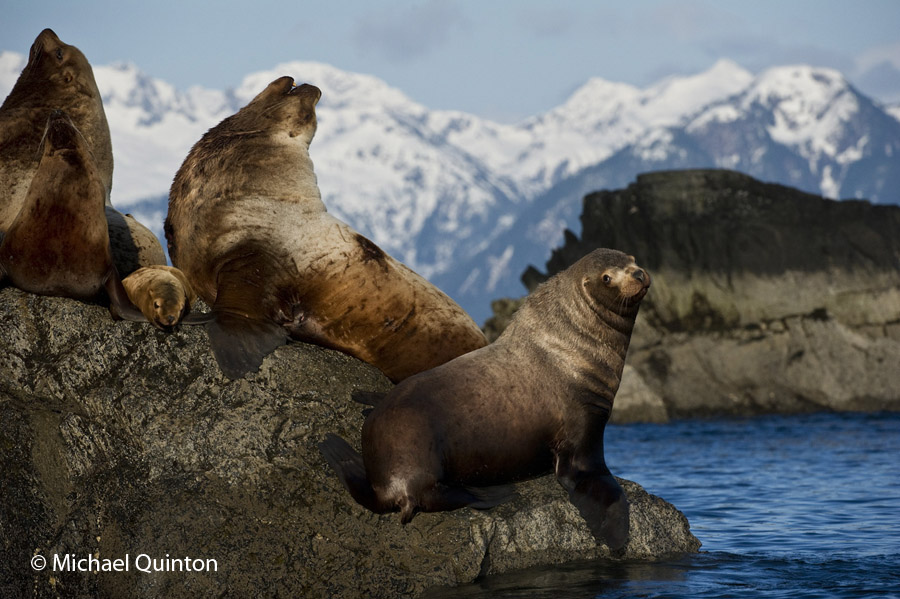 Steller’s sea lions hauled out on rocks along Alaska’s coast.
Steller’s sea lions hauled out on rocks along Alaska’s coast.
Going through ten thousand photos and trying to pick out the best is a daunting task. That was my goal upon returning home from two week photograph trip to coastal Alaska. You must be ruthless and delete the vast majority of shots. There is really not much sense in keeping too many of your photographs. They clutter up your files and make it hard to have the cream, those photos with value, at your finger tips. And when you have whittled your work down to bare bones it makes your entire collection look its best. As you might expect bringing the cream to the top is not so easy. Deleting shots that took a lot of work and more than a little luck requires a collection already bulging with good material and knowledge of what has a chance of being published in this market of low demand and high, very high supply. I pick my keepers by asking questions. Continue reading
WAITING FOR A CHICKADEE
In my part of Alaska’s Interior we have two species of chickadees. These tiny and delightful birds cheer up the coldest day but are hard to photograph. The black-capped chickadee is often found in mixed habitats of spruce, willow, birch and aspen. The boreal chickadee is associated with the black spruce bog habitats. They are quick and refuse to stay put so you must be very quick yourself. One sure way just might be the oldest techique for bird photography out there. Simply pre-focus on a favorite perch and wait.
PHOTOGRAPHING REDPOLLS, PART 2
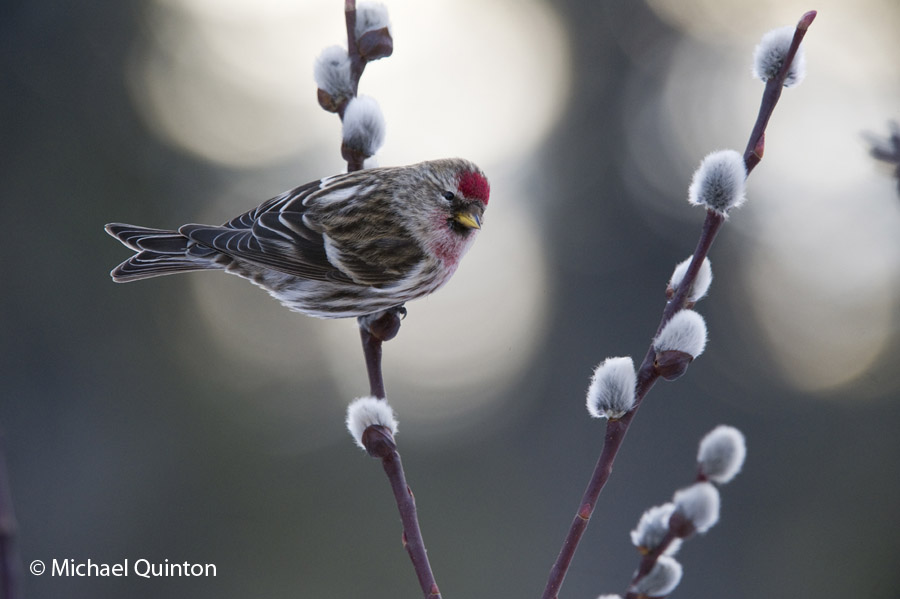 On my last post I laid out a way to get close-up photographs of the very small and beautiful common redpoll. By setting up a feeding station early in the season you can get redpolls to come to you.
On my last post I laid out a way to get close-up photographs of the very small and beautiful common redpoll. By setting up a feeding station early in the season you can get redpolls to come to you.
Attention to a few photographic details can help you to get professional results. First, you’re choice of a location is very important. Some locations are more photogenic than others, obviously. Avoid situations that are complex. For example if your location is too thick with brush and vegetation then there will always be something in the way, branches, twigs, between you and your subject. Often, it is these kinds of distractions that can ruin an otherwise nice photo. Continue reading




